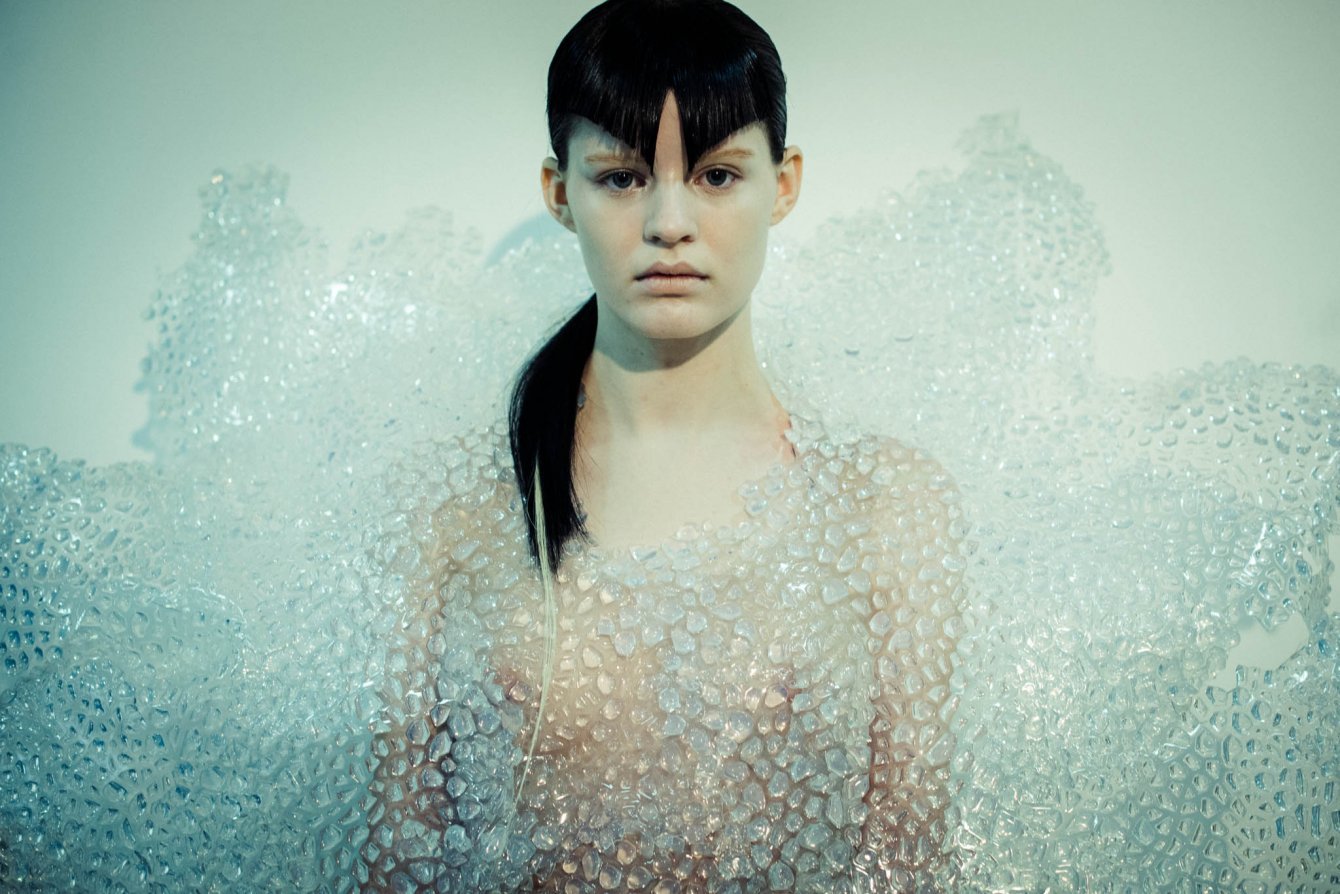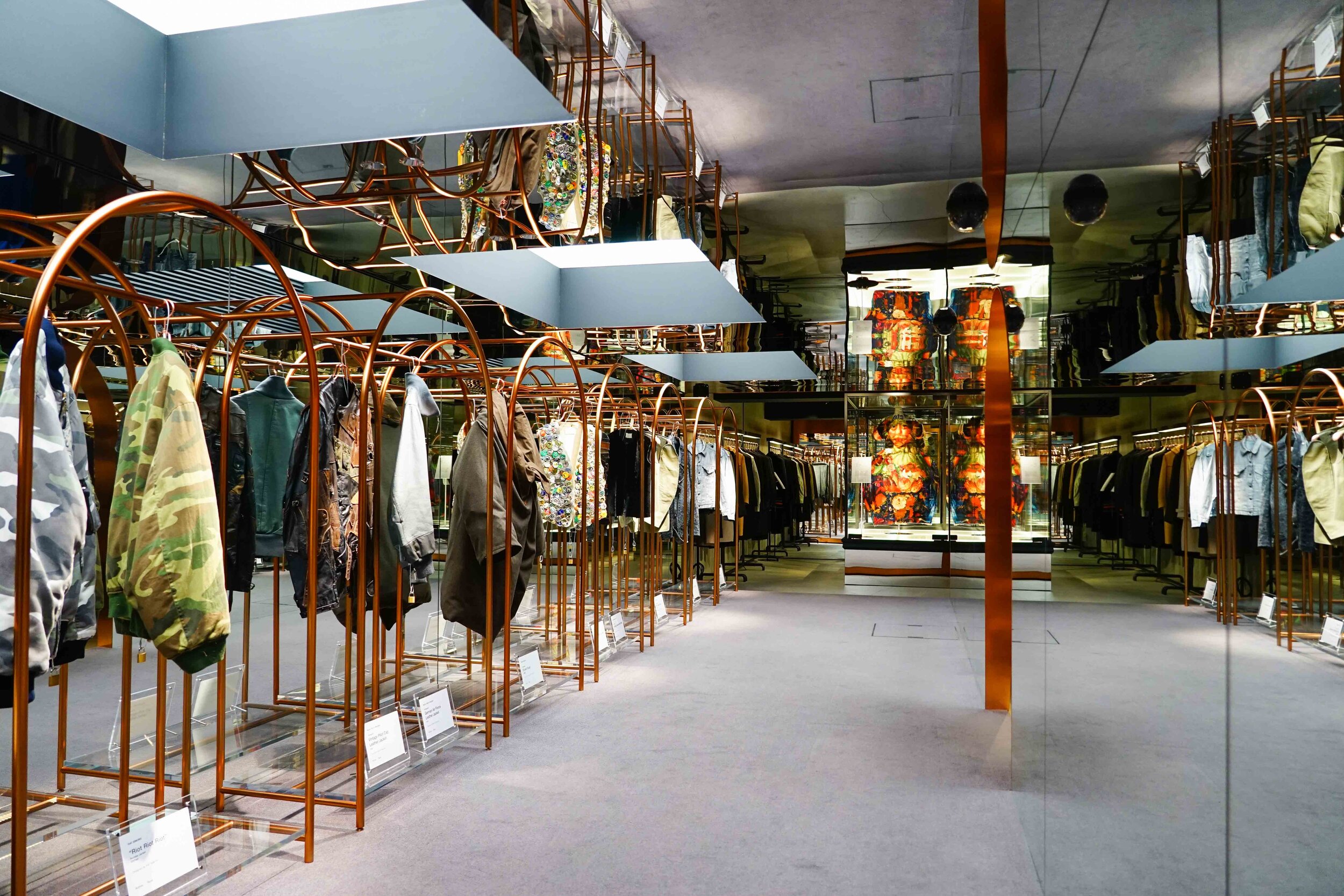The Technological Nature Of Iris Van Herpen

“Amalgamation”: noun - the action or process of uniting or merging two or more things
Iris van Herpen’s work is an amalgamation of nature and technology. The harmony that she creates, has resulted in her rise to prominence as one of the most innovative designers in the world. For her, what we wear serves as an extension of who we are and fashion is a means of amplifying our core traits rather than masking them. This amalgamation has manifested itself throughout all of van Herpen’s work and is most easily recognized in her application of 3D technology to create a fresh take on a category, haute couture, that has existed ever since the mid-1800s.
The Amalgamation Of Iris Van Herpen
“Fashion is an instrument for change, to shift us emotionally. Through biomimicry I look at the forces behind the forms in nature, these patterns and natural cycles are my guide to explore new forms of femininity for a more conscious and sustainable fashion for the future.”
A STORY THAT BEGINS WITH DANCE
Born in 1984, the Dutch designer grew up in a small village in Holland called Warmel. While she was not initially inclined to pursue fashion, her childhood interest in dance helped spark her fascination with movement. The influence that dance has over van Herpen inspires the physicality behind her designs and is brought to life through the patrons that adorn them, many of whom are tied to the world of music.
THE INSPIRATION BEHIND THE MAISON
In 2006, she graduated from Arnhem’s ArtEZ Institute of the Arts. Upon graduation, she studied for a brief time in London under legendary designer, Alexander McQueen, as well as in Amsterdam, with an artist by the name of Claudy Jongstra. Similarly to her time spent in dance, her time spent learning from both McQueen and Jongstra helped mold her own approach to design in ways that are seen throughout her collections still to this day. For example, McQueen’s Spring/Summer 2001 collection, ‘Voss’, features otherworldly designs that foreshadow van Herpen’s biomorphic style. When looking at Jongstra, the fellow Dutch artists’ handiwork and passion for integrating natural elements throughout her pieces align with van Herpen’s inclination to weave nature’s beauty into her fabrics. In 2007, nearly one year later, after studying under both artists, she founded her label, self-titled, ‘Iris van Herpen’.
At the maison of Iris van Herpen, haute couture is seen as transformational and was founded on the belief that the amalgamation of materials and tools can push the boundaries of what clothing can be. So much so that van Herpen uses unnamed materials that are still in the experimental phase of development. One of the methods and materials by which she has created some of her most notable works is through 3D printing. Not only does her gravitation toward 3D design speak volumes about her focus on innovation, it also pays off her drive to create clothing that keeps nature in mind.
BRINGING 3D COUTURE TO THE RUNWAY
In 2010, van Herpen created a skirt and top that was 3D-printed using polyamide, goat leather and transparent lasered acrylic sheets. The piece was shown in her country of origin, during Amsterdam Fashion Week and as a result, she became the first designer to feature 3D-printed couture on the runway.
For her 2011 collection, forever a student, van Herpen dove deeper into the craft of 3D design. After scouring the internet for clues on who might be the right person to learn more from, she found Belgian designer, Isaïe Bloch. The 3D designer, headquartered at Materialise in Leuven, immediately caught her eye due to a far more organic style than other computer-generated works that she had come across. She decided to go pay him a visit to see about working on something together. Firstly, she wanted to learn more about the limitations of 3D printing so that she could have a framework to work within and to figure out how far she could push the science behind the technology. In addition to learning the framework, she wanted to understand the process. The materials used were most important to van Herpen during that time and remain top-of-mind to this day. Materials like alumide which is a mixture of polyamide and aluminum powder would give her the flexibility she craved in order to give the wearer a garment that would allow for fluid movements.
In total, the printing process included hundreds, if not thousands of layers put together and took the group nearly 42 hours to complete. The unification of sustainability, innovation and collaboration that encapsulated this project resulted in a rigid garment shaped as a Rorschach test. Van Herpen debuted the piece at Paris Haute Couture Fashion Week and it eventually went on to be named one of the years’ best inventions by Time Magazine.
MUSIC AS A MUSE
Now, to go back to the early days of van Herpen’s life, you might remember that she intended on pursuing a career in dance rather than fashion. On one hand, we see dance influence the way by which she creates garments to reflect movement. On the other hand, we see dance influence how intertwined her work has become within the music industry and adorned by some of the world’s most notable artists. In 2009, Lady Gaga wore van Herpen for the first time during her performance at the VMAs. In 2011, Björk wore van Herpen for her ‘Biophilia’ album cover. The list goes on and on from dressing the likes of Beyoncé to Grimes to designing the costumes for the Operá de Paris. There are countless examples of artists and notable figures who have taken a liking to van Herpen’s unique style and helped bring it to the forefront of culture.
Grimes shared her thoughts with our team at Sabukaru, stating,
“Iris is a technologist and an artist in a way that brings a sense of intuition about the human body to technology that feels deeply new to me.”
Van Herpen’s designs have been exhibited in various museums, including New York's Metropolitan Museum of Art, the Royal Museum in Toronto and the Groninger Museum. Her scientific inclination has also led to collaborations with CERN, the European Organisation for Nuclear Research and the Massachusetts Institute of Technology according to Business of Fashion.
FASHION FROM THE FUTURE BUILT FOR TODAY
In 2021, van Herpen released her latest collection called, ‘Earthrise’, including dresses made from Parley for the Ocean’s recycled-plastic fabrics. She also partnered up with Maria Sharapova and Evian during the British Fashion Awards to create a dress that took over 750 hours of work, upcycling plastic water bottles into a stunning garment. These most recent projects harken back to the motifs that have run fluid throughout all of her designs to date by taking inspiration from nature and embedding life itself into pieces emblematic of how the world will dress for years to come. Iris van Herpen’s works, by all accounts, are an amalgamation of nature and technology. The human body, working hand in hand with machines to help push us to a new frontier of fashion and how we come to define the very meaning of the word - from being a popular trend to being a timeless sensation.
Text By: Brendan Smith is a Strategist living in Manhattan and working with clients ranging from adidas to Volkswagen. In parallel, he helps advise artists throughout New York, Atlanta, Chicago, London and Nigeria. With the goal of one day constructing hubs that enable up & coming artists with the resources that they need, he is taking it one day at a time and exploring the present through an opportunistic lens.






















![Birds of a Feather, [The Karasu-Zoku] Flock Together](https://images.squarespace-cdn.com/content/v1/57825361440243db4a4b7830/1694159296470-2EUWGYB5N2HZ8RZNYTZ4/yohji+show.jpeg)